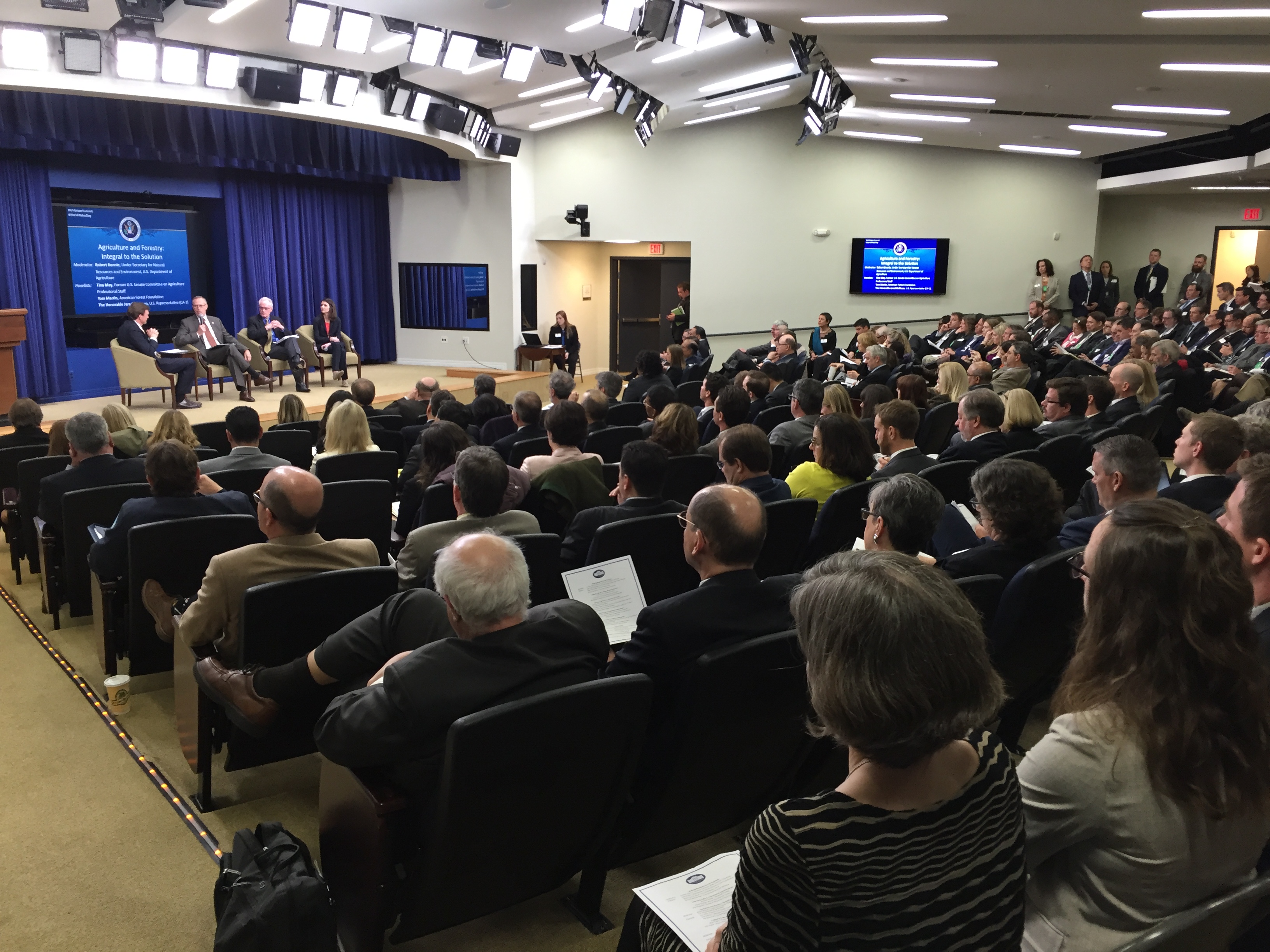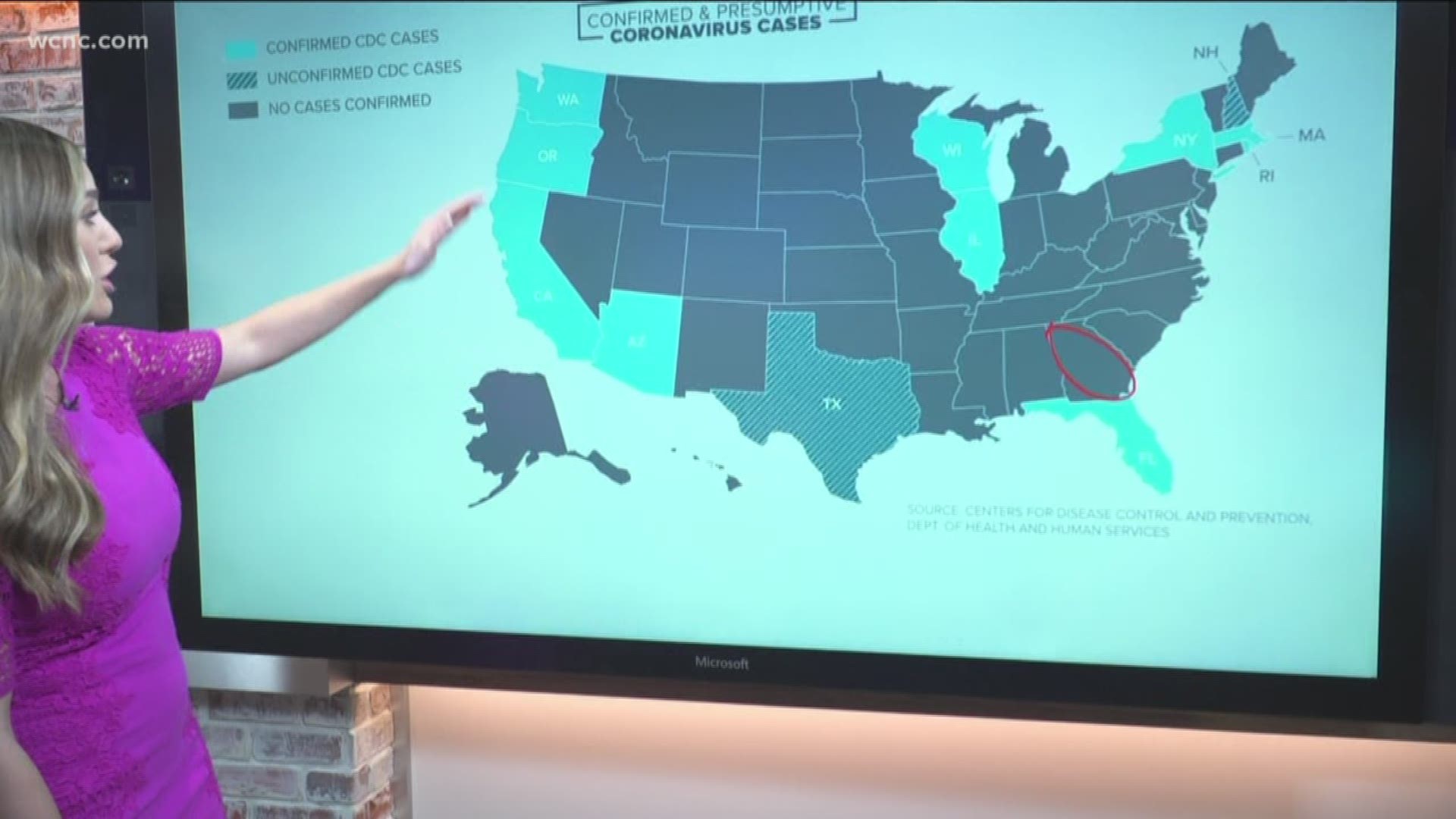![PUMPED DRY: The Global Crisis of Vanishing Groundwater [video : 77086910]](http://videos.usatoday.net/Brightcove2/29906170001/2015/12/29906170001_4655251098001_4655234136001-vs.jpg?pubId=29906170001)
WASHINGTON — The White House held its first national water summit Tuesday, seeking to put a greater focus on water challenges ranging from climate change to the old, leaky pipes that waste billions of gallons across the country every day.
The Obama administration invited businesspeople, scientists and policymakers to the event and announced several initiatives aimed at encouraging more investment in water infrastructure, improving water data and boosting technologies that can help shrink the country’s water footprint.
“We really just aren’t prepared for the new normal that we already are experiencing: not enough water in some places and sometimes too much in others," said Alice Hill, special assistant to President Obama and a member of the National Security Council staff.
She pointed to the severe drought that has left declining flows in the Colorado River, saying it illustrates the need to prepare for the impacts of climate change.
“We need to do more to conserve the water we have, and we need to invest in that water infrastructure that rests below our feet,” Hill said. “We need to find new ways to work together to solve these problems.”
![Pumped Dry [oembed : 82135712] [oembed : 82135712]](/Portals/_default/Skins/PrestoLegacy/CommonCss/images/smartembed.png)
The White House organized the summit on World Water Day, with a series of panel discussions focusing on topics from the lead contamination crisis in Flint, Mich., to preparedness for floods.
Some of the speakers raised problems with how water is managed, including the fragmentation of responsibilities among different agencies at the federal level.
“We don’t have a single water agency in the federal government. We have water housed all over the place,” said Rep. Jared Huffman, D-Calif. “The way we’ve Balkanized water at the federal government is not helpful in terms of promoting consistent, coherent, leading-edge solutions to our water problems.”
The Obama administration’s latest steps appear geared toward having the government play a bigger role in coordinating water policy.
Among its initiatives, the White House issued a presidential memorandum and a plan to promote long-term drought preparedness. Those measures are intended to permanently establish the National Drought Resilience Partnership as an interagency task force that will help coordinate efforts to prepare for and reduce the impacts of droughts.
The memorandum calls for improving the sharing and integration of water data related to snowpack, groundwater, stream flow and soil moisture between federal, state, local and tribal governments.
The White House announced a new “water innovation strategy” in December, saying the country has the potential to reduce its total water use by a third. The administration has sought to enlist companies and organizations in efforts to make water systems more sustainable.
Other efforts announced during the summit included commitments of nearly $4 billion in private capital for infrastructure investments, and private-sector plans to invest more than $1 billion in developing new technologies such as advanced water treatment and reuse systems.
The administration also said it will spend about $35 million this year in federal grants to support water science. The National Oceanic and Atmospheric Administration has established a new National Water Center in Tuscaloosa, Ala., and also plans to release a new National Water Model that will improve forecasting of river flows.
![Rep. Jared Huffman, D-Calif. [pullquote : 82149292]](/Portals/_default/Skins/PrestoLegacy/CommonCss/images/pullquote.jpg)
More water data will help agencies that manage water make better real-time decisions, said Felicia Marcus, chair of California’s State Water Resources Control Board.
“The thing that grabbed my attention most is this much more updated and accessible and detailed data that we can get from NOAA,” Marcus said. “I got excited about the data prediction capacity and the potential to foster more technological innovation.”
Obama and his aides have said the country needs to urgently prepare for the effects of global warming on water supplies. Hill said there is a need to “find a new paradigm.”
The Interior Department released a report Tuesday on the projected regional impacts of climate change on regional water supplies, laying out strategies for preparing.
“We are getting smarter about using water more efficiently, and we expect that to get better over time,” said John Holdren, assistant to the president for science and technology. He pointed out that many parts of the world are simply “using more than the available flow” and drawing heavily on groundwater, leading to declining aquifers.
During the severe drought in California, groundwater levels have plunged as farms have relied more heavily on water from wells.
Huffman called for greater efforts to promote water conservation in agriculture, where enormous savings can be achieved. “We’ve done very little on agricultural water conservation, and yet that is where most of the water is used,” he said.
After the speeches, the White House invited participants to a room with several displays focusing on water, including a model town built with Legos that featured a wastewater treatment plant and a realistic cross-section of the ground beneath the town showing water in the aquifer.
The displays also featured a watery landscape made of moldable sand and a virtual reality headset that allowed participants to explore a water reuse plant in Denmark.
Officials in the Obama administration have likened the efforts they hope to encourage to the strides the United States has made in moving toward bigger investments in renewable energy.
“We’ve got a playbook that works in clean energy and energy efficiency,” said Ali Zaidi, the associate director for natural resources, energy and science in the Office of Management and Budget. He noted that the administration proposed a 33% increase in water-related funding in the president’s budget, which would make it about $300 million.
“I know there are leaders on the Hill that believe as we do that water innovation in the federal budget needs to grow,” Zaidi said.
Many participants said old infrastructure is a huge issue that the country needs to tackle.
“Just fix the plumbing. You’ll save a lot of water,” said Victor Griego, a board member of Los Angeles-based Water Education for Latino Leaders.
Zaidi cited one statistic that shows just how much investment is needed to patch up old and leaky U.S. water systems.
"We waste 7 billion gallons of water each day — water that we have treated and cleaned," Zaidi said. "Let’s get rid of the leaky pipes. Let’s unleash innovation."
Follow Ian James on Twitter: @TDSIanJames


![635942538838798252-IMG-1789.JPG [image : 82125786]](http://www.gannett-cdn.com/-mm-/c2209d241c9d9e4dc655c9727839a451ff8879fc/c=133-0-2997-2448/local/-/media/2016/03/22/PalmSprings/PalmSprings/635942538838798252-IMG-1789.JPG)
![Lego town at the White House Water Summit [image : 82148230]](http://www.gannett-cdn.com/-mm-/a200f9579e1ed7d96eea41819d5e688bbc09faa3/c=200-0-3064-2448/local/-/media/2016/03/22/PalmSprings/PalmSprings/635942815393824337-IMG-1820.JPG)
![Virtual reality at the White House Water Summit [image : 82148162]](http://www.gannett-cdn.com/-mm-/a200f9579e1ed7d96eea41819d5e688bbc09faa3/c=200-0-3064-2448/local/-/media/2016/03/22/PalmSprings/PalmSprings/635942814002919421-IMG-1837.JPG)
